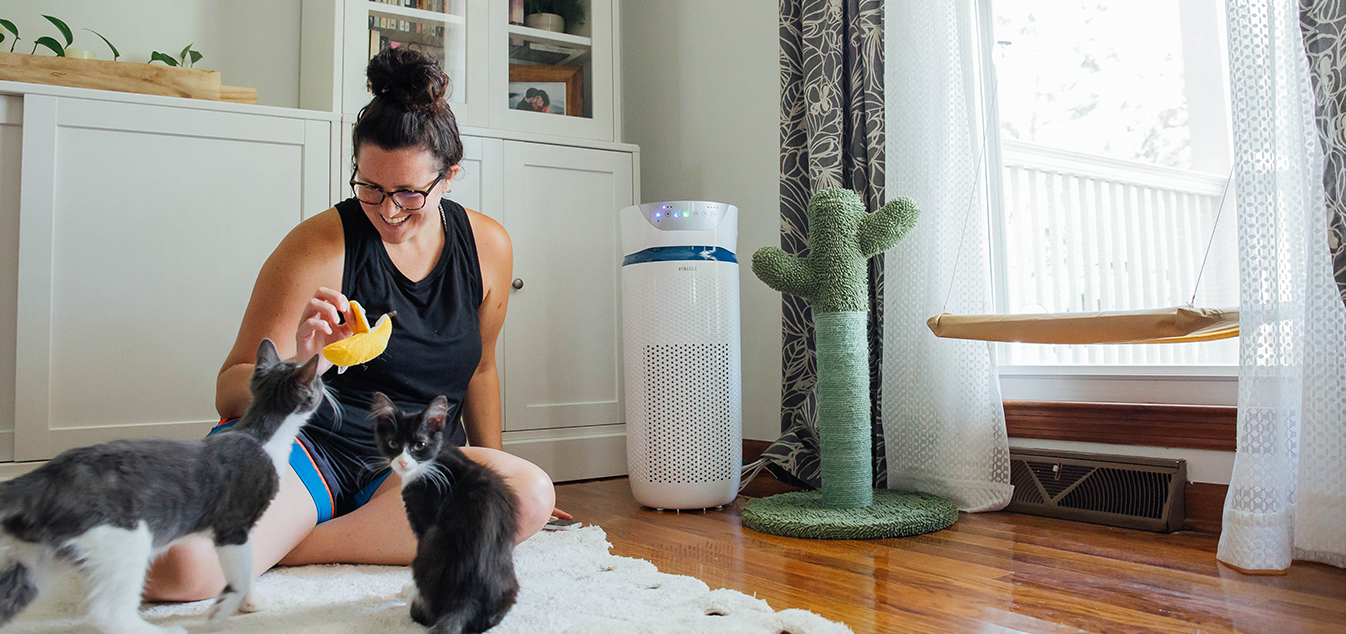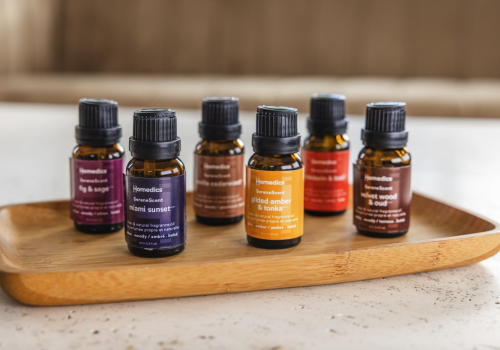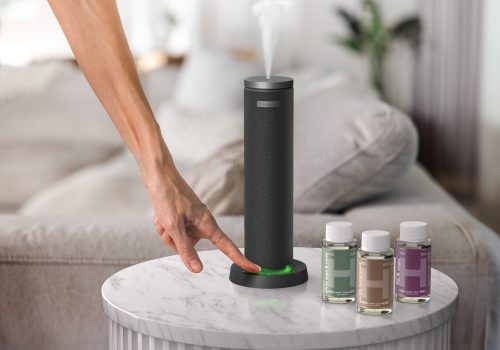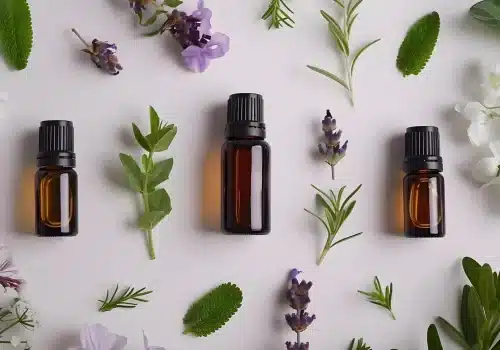The Air in There
Getting fresh air in the great outdoors is always a good idea. But how great is your air indoors? Indoor air quality is something many of us don’t think about until there’s a problem. Exposure to certain airborne particles can cause respiratory issues, especially for allergy sufferers or people who are sensitive to certain pollutants, like dust or mold spores. Yet, indoor air quality —and your health—can greatly improve with a few, simple ideas.
One of the easiest ways to improve indoor air quality is by more thorough house cleaning (not surprisingly, almost no one wants to hear that!).More regular cleaning and vacuuming of carpet, drapes, bedding and upholstered furniture, especially if you have pets, can really make a difference. So can having a HEPA filtration system on your vacuum cleaner—it traps many airborne particles you can’t even see, like mold spores, pet dander, and pollen. Hard surfaces, like wood floors and tile, are more allergy-sufferer-friendly than carpet, and microfiber mops can help remove dust. Even something as simple as putting a floor mat by entrances can make a big difference in indoor air quality—providing you can actually get your family to wipe their shoes on it before coming inside!
And then there are dust mites. They’re almost impossible to see—but do yourself a favor, don’t ever look at a magnified picture of them—you may never get to sleep again! Luckily, it’s easy to find dust-mite-proof covers for bedding, pillows, and mattresses. Washing bedding in water that’s at least 130 degrees kills off dust mites and other pests. Even something as simple as getting rid of clutter helps, because you’re cutting down on places where dust settles.
Breathe Cleaner
One of the easiest and best ways to improve indoor air quality is with a room air purifier, like our TotalClean® PetPlus 5-in-1 Air Purifier. An air purifier works around the clock to trap pollutants like pet dander, pet hair, dust mites, mold spores, and more. Your family can breathe easier, and so can you, knowing how hard the TrueHEPA filtration is working. And besides eliminating allergy air, this purifier also improves the smell of your home by removing litter box odor, wet pet smell, and more. Cleaner, fresher, healthier air can literally happen overnight with a HEPA air purifier.
Don’t Get Your Dander Up
We all love our pets, but pet dander is one of the most common complaints of allergy sufferers. Some people start to wheeze just by entering a house that has a dog or cat. Brushing your pet regularly (ideally, outside) removes excess fur and dead skin cells. And it actually makes your pet feel better to get all that stuff off! Keep your pet’s fur conditioned to keep it from drying out and creating more pet dander. Vacuuming with a HEPA filtration system also helps. But make sure you use a vacuum cleaner with a bag —emptying those models with a container can expose you to airborne particles. Also, and this is tough for many people, don’t let your pet sleep in your bedroom, especially on your bed. If you’re an allergy sufferer, keep where you sleep a pet-dander-free zone. But, if you really need to snuggle with your furry friend, we highly recommend a hard-working HEPA air purifier for the rooms where you and your pet spend the most time. The best? Our TotalClean® PetPlus 5-in-1 Air Purifier.
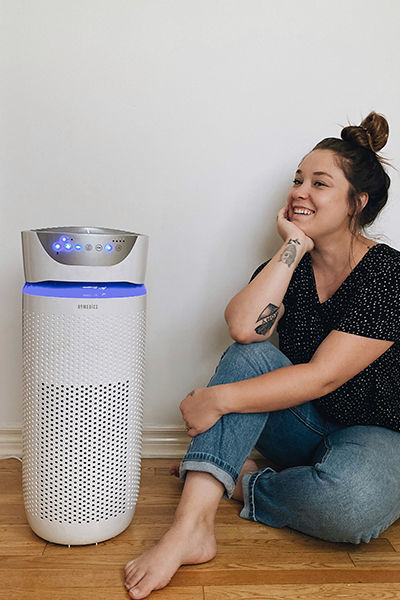
Mold And More
Mold spores are another common source of allergy air. Mold spores grow in humid areas, such as bathrooms and kitchens, and can cause respiratory problems, such as coughing, itchy eyes, and sneezing. Obviously, scrub off visible mold in places like showers, walls, and kitchen and bathroom fixtures, such as faucets. And make sure bathrooms and kitchens are properly ventilated, including fans that can be run during bathing and cooking. Use an air conditioner, particularly one with HEPA filtration. Running a dehumidifier also keeps mold spores from forming. Ideally, your humidity levels should be below 50 percent.
There are two schools of thoughts on indoor plants. Some scientists tout the benefits of plants that clean the air, like palm trees and bamboo. But many other houseplants can contain pollen, which is bad for indoor air quality. Check online for which plants are best for your house. Also, soil can contain mold spores, especially when soggy. Keep your plants in well-ventilated areas and don’t over water.
It’s easy to forget about filter replacement for a forced-air system, especially if it’s a furnace down in the basement. Prepare to be horrified when you see how much dirt and dust they trap! Find out how often you need to change your filters and mark those dates in your calendar. Stocking up on filters when they’re on sale is another good idea. Also consider getting your air ducts cleaned, although that procedure is somewhat controversial. Some homeowners feel like it gives their house a truly thorough cleaning and helps indoor air quality. Others say it’s unnecessary, and a waste of money. Having a top-quality room air purifier can take the place of duct cleaning. To help make a better decision, check out what the EPA has to say.
Let the Good Air In!
And let’s not forget about one of the simplest ways to improve indoor air quality: open your windows! If you live in a cold climate, you’ll tend to keep your windows shut tight all winter, for good reason. But that makes indoor air quality suffer; pet dander, dust mites, airborne particles, mold spores, and other allergens really have nowhere to go. Instead of spring being the worst allergy season, allergy sufferers don’t realize how bad winter can be, too. If you’re a brave, hardy soul, by all means open the windows sometimes in the winter! As for the rest of us, it’s a lot easier—and warmer—to keep our room air purifier going, knowing the True HEPA filtration is making indoor air quality better, healthier, and fresher.
We don’t live in a bubble. We’ll never be able to eliminate all allergens. But we can certainly find ways of removing or lessening many of them. And we can all live—and live better—with that.
Medical Disclaimer: This content is provided for informational purposes only and not intended to be a substitute for professional medical advice, diagnosis or treatment.

